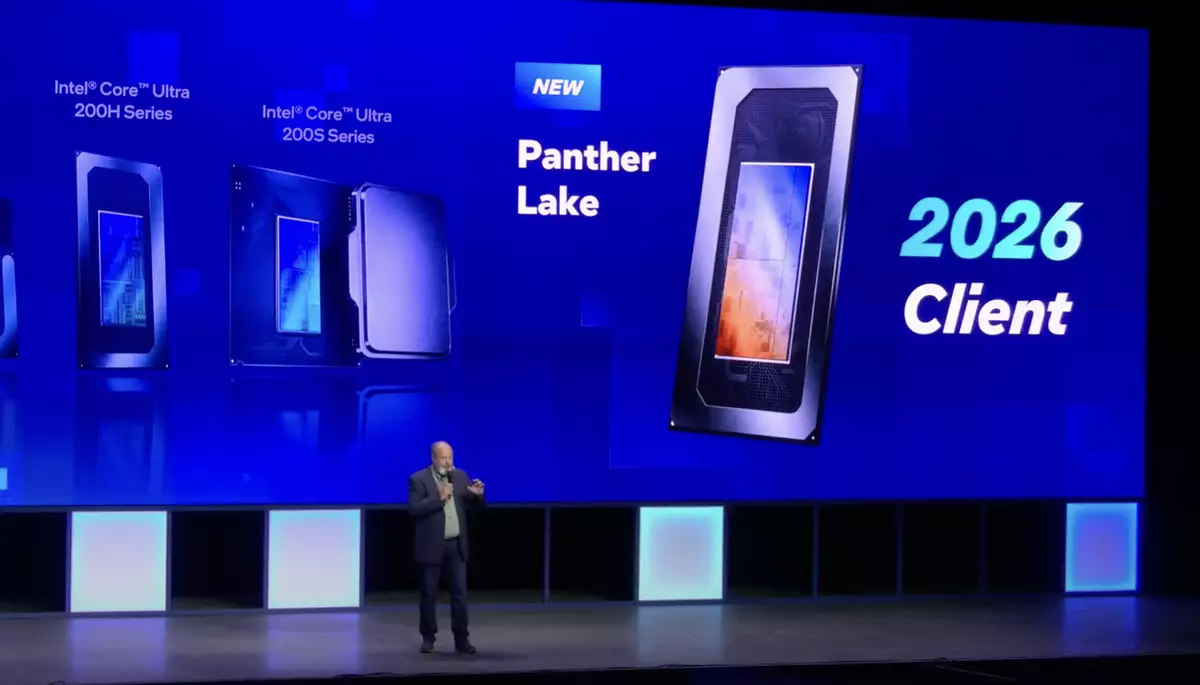At the recent Intel Vision 2025 conference, newly appointed CEO Lip-Bu Tan took the stage to reassure stakeholders and tech enthusiasts about the company’s strategic direction. The product update he delivered, while seemingly underwhelming in terms of groundbreaking announcements, introduced the upcoming Panther Lake CPU—an advancement that could be pivotal for Intel’s future. However, behind the optimism, one can sense the weight of Intel’s turbulent past and the daunting challenges that lie ahead.
The Panther Lake CPU: A Glimmer of Hope
Intel’s Panther Lake CPU seeks to merge the best capabilities of two of its existing architectures: Lunar Lake and Arrow Lake. Jim Johnson, head of client computing at Intel, expressed high hopes for Panther Lake, stating it combines Lunar Lake’s impressive power efficiency and Arrow Lake’s robust performance. The talk of incorporating on-package memory and scaling capabilities resonates with a market eager for advancements that marry speed with energy conservation—qualities that are paramount for modern computing devices.
However, while the Panther Lake promises much, its arrival may not be as immediate as suggested. The production timeline—allegedly starting later this year—could see the chip available to consumers only in 2026. This delay raises eyebrows, especially in a fast-paced tech industry where delays can mean missed opportunities. Whether Intel can maintain its relevance against competitors like TSMC, who continues to dominate advanced manufacturing processes, remains a significant question.
Production Delays: A Troubling Pattern
The timeline for Panther Lake paints a concerning picture. Initially projected for a swifter rollout, the CPU’s production faced a setback, reminiscent of the frustrations surrounding Intel’s infamous 10nm node. The cancelation of the anticipated 20A node last year only adds to the skepticism regarding Intel’s production capabilities. What was promised as a new chapter in Intel’s manufacturing prowess now feels more like a sequel steeped in drama and uncertainty.
Notably, the underlying reasons for the delays could be attributed to yield issues, as well as the complex nature of innovations integrated into the 18A node. The ambition behind Panther Lake—which aims to enhance transistor density and incorporate advanced backside power technology—is commendable but echoes the challenges that have haunted Intel historically. With high expectations come the high stakes of meeting them.
Strategic Implications and Future Outlook
As Intel braces for what many hope will be a resurgence, the stakes are high. The ability to produce Panther Lake effectively and on time is crucial for re-establishing its foothold in the semiconductor industry. Competing head-to-head with TSMC’s new N3 and upcoming N2 nodes will be no easy feat. Current competition not only emphasizes manufacturing efficiency but also the ability to innovate at breakneck speed.
The path forward for Intel is laden with unpredictability. While the announcement of Panther Lake signifies a potential turning point, it feels like a cautiously optimistic promise rather than a guaranteed triumph. Stakeholders are stuck in a balancing act between hope and wariness, anxiously awaiting tangible results from Intel’s ambitious strategies.
For Intel, the journey towards reclaiming technology leadership is far from over. The Panther Lake CPU exemplifies both hope and hesitation—a symbol of the company’s ambition to innovate, but also a reminder of the hurdles that have stymied its progress in the past. As the industry watches and waits, Intel must not only deliver on its promises but also prove resilient in the face of persistent challenges. Time will tell if Panther Lake can live up to the hype, or if it will become yet another chapter in Intel’s ongoing saga of ambitions and setbacks.


Leave a Reply